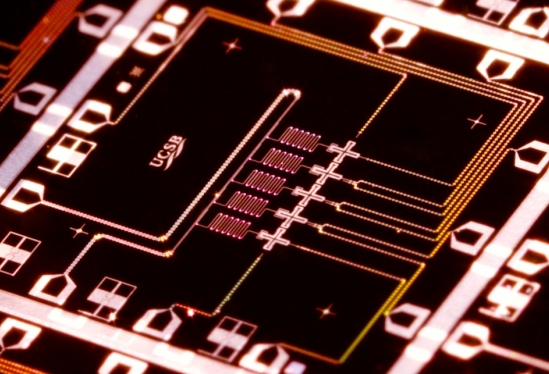Google partners with UC Santa Barbara team to build new superconductor-based quantum information processors
September 3, 2014

UC Santa Barbara Martinis Group’s superconducting five-qubit array (credit: Erik Lucero)
Hartmut Neven, Director of Engineering for the Quantum Artificial Intelligence team at Google said the team is launching a hardware initiative to design and build new quantum information processors based on superconducting electronics.
John Martinis and his team at UC Santa Barbara will join Google in this initiative. Martinis and his group have been building superconducting quantum electronic components of very high fidelity. In April, they announced in Nature that they had developed a superconducting five-qubit array with “an average single-qubit gate fidelity of 99.92 per cent and a two-qubit gate fidelity of up to 99.4 per cent.”
“With this new integrated hardware group, Google’s Quantum AI team will now be able to implement and test new designs for quantum optimization and inference processors based on recent theoretical insights as well as their learnings from the D-Wave quantum annealing architecture,” Neven said.
“We will continue to collaborate with D-Wave scientists and to experiment with the ‘Vesuvius’ machine at NASA Ames, which will be upgraded to a 1000 qubit ‘Washington’ processor.”